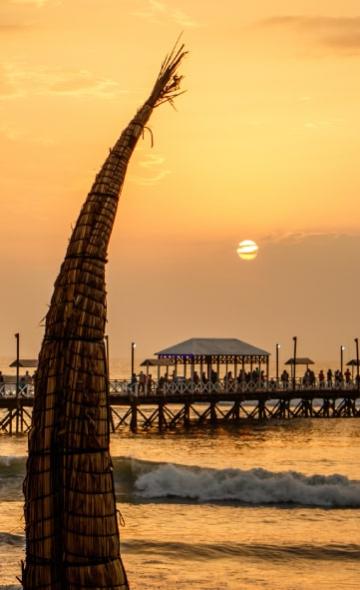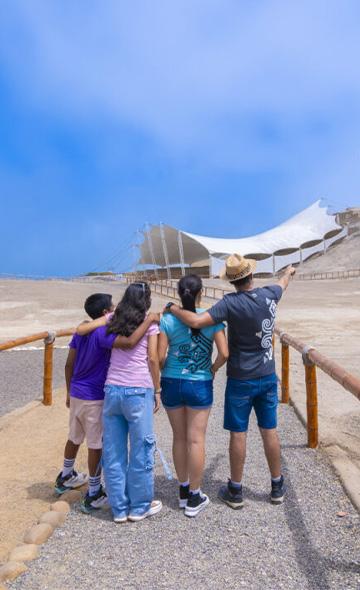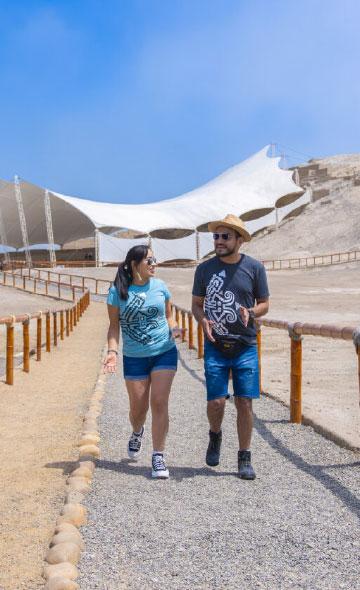- Visitors
- Researchers
- Students
- Community
- Information for the tourist
- Hours and fees
- How to get?
- Visitor Regulations
- Virtual tours
- Classic route
- Mystical route
- Specialized route
- Site museum
- Know the town
- Cultural Spaces
- Cao Museum
- Huaca Cao Viejo
- Huaca Prieta
- Huaca Cortada
- Ceremonial Well
- Walls
- Play at home
- Puzzle
- Trivia
- Memorize
- Crosswords
- Alphabet soup
- Crafts
- Pac-Man Moche
- Workshops and Inventory
- Micro-workshops
- Collections inventory
- News
- Visitors
- 5 natural attractions that you can visit in La Libertad
News
CategoriesSelect the category you want to see:
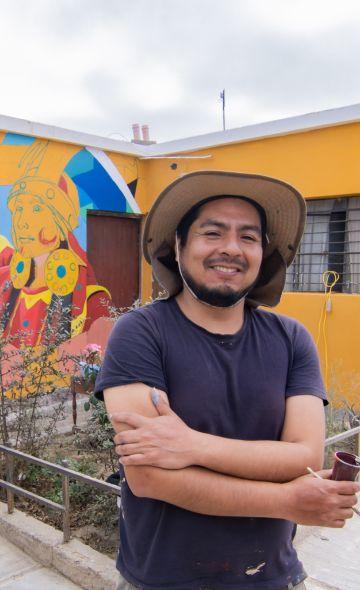
Magdalena de Cao to Once Again Host an International Mural Art Gathering ...
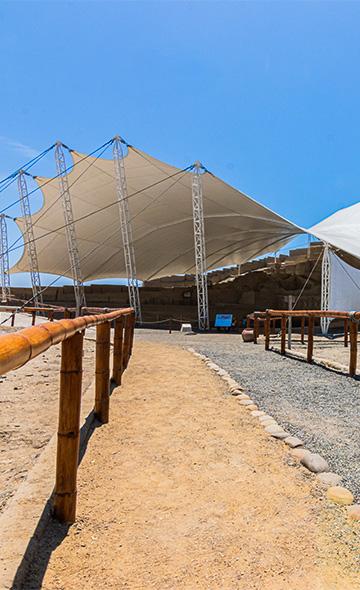
Explore El Brujo Through Virtual Tours: Culture and History at a Click ...
To receive new news.
By: Complejo arqueológico El Brujo
Recently, Peru was recognized as the Best International Destination in the second edition of the 2024 National Geographic Travel Readers' Awards. And, to learn more about its marvels, we direct you to the north, where you can visit the El Brujo Archaeological Complex and 5 natural attractions, where you will live an exciting experience. Not only will you be able to experience a guided tour of the constructions of Mochica society, but you will also see the site museum where the mummy of the Lady of Cao is exhibited.
However, a visit to the CAEB can also be an excellent opportunity to get to know the most beautiful natural attractions of La Libertad. In this post, we tell you which ones you need to include in your list of pending destinations.
El Cañoncillo Natural Forest
The El Cañoncillo Natural Forest is part of the country's dry forest ecosystems. Its coastal reliefs, such as plains, dunes and hills, give it a special character.
The warm climate and scarce rainfall of the Yunga region make this place ideal for diverse flora and fauna. The carob forests are the protagonists, and you can also find wild horses and coastal foxes.
But that is not all. The El Cañoncillo Natural Forest has a fascinating history. Here, you will find archaeological remains of the Cupisnique, Moche and Chimu cultures. Imagine walking among the traces of the past while enjoying nature!
If you love adventure, this place is perfect. You can camp surrounded by the freshness of its three natural lagoons: Gallinazo, Larga and Cañoncillo. And don't be surprised if you come across parakeets, thrushes, chiscos, cuculas, hummingbirds, owls, eagles and vultures. The carob forest, with its 1330 hectares, is their home.
Located in the province of Pacasmayo, in the department of La Libertad, the El Cañoncillo Natural Forest is a special destination for ecological tourism.
1.jpg)
Huanchaco Beach Area
The Huanchaco Beach Area is recognized as a National Tourist Reserve by the Ministry of Industry, Tourism, Integration and International Trade Negotiations (MITINCI). Located 13 km from Trujillo, it is a must-see destination for tourists.
Its name comes from "Guaukocha," which means "beautiful lagoon with golden fish." This picturesque place combines history and natural beauty in a unique way. In the upper part of the coastal city, there is a colonial church that venerates the Holy Virgin of Help. Its charming architecture and panoramic location make it a special place.
What really makes Huanchaco famous, though, are the traditional totora reed horses. These small vessels have been used by fishermen since pre-Columbian times. They represent an essential part of the local culture and a fundamental tool for fishing in these waters.
The beaches of Huanchaco are of fine sand and have a gentle slope towards the waters of the Pacific Ocean. The weather is warm from December to April, and mild from May to November, with an average annual temperature of 23ºC.
The local fauna is also impressive. Pelicans, seagulls and boobies cross the skies, while crustaceans hide on the shores. Also, fishing remains a vital activity in the area, due to the abundance of marine species.
Despite the passage of time, the inhabitants of Huanchaco keep alive the customs of their Mochica ancestors. So, if you ever visit Trujillo, don't miss the opportunity to explore this corner full of history, beauty and tradition.
.jpg)
El Brujo Beach
The beach is located an hour and a half from the city of Trujillo, but it is very close to the El Brujo Archaeological Complex, so it is a good reason to visit it.
Like Huanchaco, it also has perfect waves for surfing, so you can take advantage of your visit to take your board and try to master the famous "Chicamera waves", considered the largest left waves in the world.
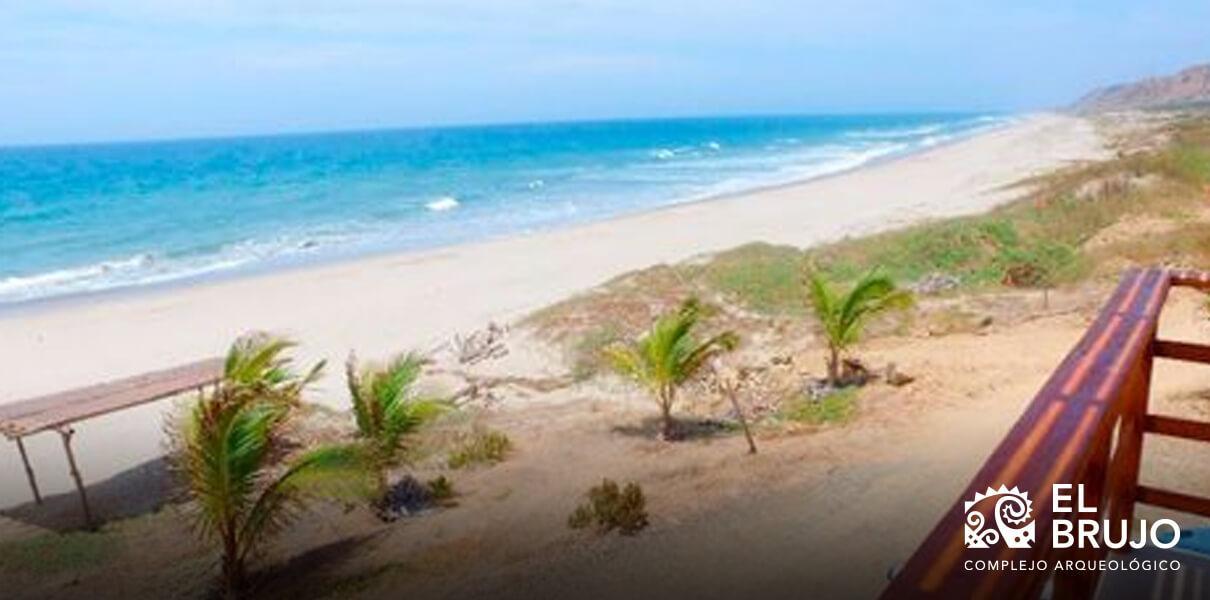
Conache Lagoon
The Conache Lagoon Ecological Reserve is near Pampas de San Juan, in the hamlet of Conache, under the jurisdiction of the town of Santo Domingo, in the District of Laredo. This place is like a mirror of crystal-clear water, surrounded by dunes that seem to have been sculpted by the wind.
The carob trees, strong and majestic, rise around it. And, if you pay attention, you will be able to see a variety of species of fauna: herons, chiscos, wild ducks and other inhabitants of this natural paradise.
The Conache Ecological Reserve is a gift for the senses. Its tranquility and beauty invite you to connect with nature. Best of all, it is only 14 kilometers from Trujillo and you have the opportunity to practice sports such as sandboarding.
.jpg)
Calipuy National Sanctuary
The Calipuy National Sanctuary, located in Santiago de Chuco, covers 4,500 hectares with altitudes ranging from 3,625 m.a.s.l to 4,270 m.a.s.l on Mount Puruquio. It is responsible for protecting the dense Raimondi bromeliad, with more than 90,000 specimens, and for maintaining the Huamanzaña River basin, vital for the population.
The sanctuary, with a tundra weather, is home to fauna such as the white-tailed deer and the Andean fox and has flora that includes Raimondi bromeliad forests and medicinal plants. The tourist activity offers four established routes that allow you to explore the main natural and archaeological attractions of the area.
1. Raimondi Bromeliad Mirador Route: Here, you will visit attractions such as the "Rock Forest" and the "El Chorro" waterfall.
2. La Vizcacha Route: A short, 5 km circuit that is perfect for observing the Raimondi Bromeliad and the local fauna.
3. Adventure route to Mount Puruquio: You will climb to the top of Mount Puruquio and enjoy panoramic views of the sanctuary.
4. Comprehensive Route to the Sanctuary: A two-day tour that covers the main points of interest, including camping areas and spectacular views from Mount Puruquio.
.jpg)
These routes allow visitors to enjoy the biodiversity and scenic beauty of the sanctuary while practicing adventure and ecotourism activities.
Exploring the El Brujo Archaeological Complex is just the beginning of a fascinating tour of the natural treasures of La Libertad. In addition, you can broaden your horizons, including a visit to the picturesque neighboring towns such as the charming village of Magdalena de Cao, where you can immerse yourself in the authenticity of its traditions and customs while enjoying the warmth of its people and the beauty of its landscapes.
This combination of nature, ancestral history, and everyday life is possible if you plan a trip to this region of the Peruvian northern coast. We are expecting you!
Visitors , outstanding news


